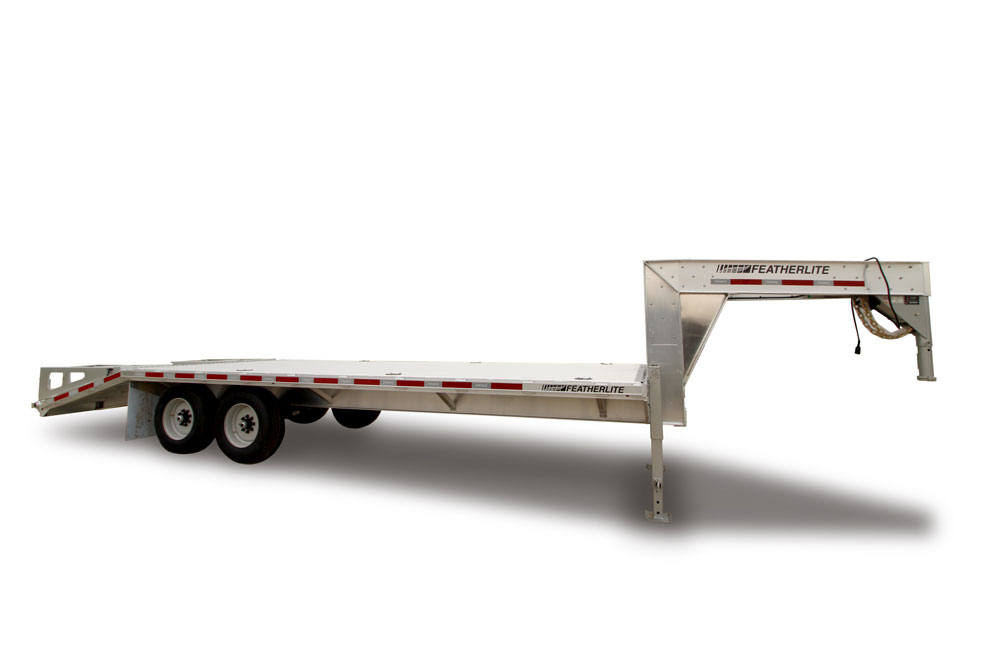
Horse and stock trailers can easily be used to move more than horses. Depending on their floor plans they can haul hay, other livestock, gates and fencing panels, ground poles and even small equipment. Using trailers for multiple purposes means less investment in equipment, but it might not be convenient. That’s where a flat-bed trailer can come in handy.
Sizes and Amenities
It’s important to think about all the ways you can use a flatbed trailer before you purchase one. It’s also helpful to look into the future and consider any changes that might be on the horizon for your horse property.
If you’re not planning changes to your equine operation, buy a flat-bed trailer to accommodate what you need now.
However, if you are going to buy new or additional property, purchase a tractor, engage in new or different disciplines that requires you to move equipment such as pens, poles, gates, obstacles, etc., build new stabling, grow your own hay or purchase hay locally and pick it up from the field, then you will need a different size or type of trailer.
Some manufacturers make extendable trailers that offer greater flexibility.
Flat-bed trailers also come with and without ramps and sides. Do you need to roll something onto your trailer like a cart or equipment? Do you need sides to keep things from rolling around for short trips (like picking up poles and standards when changing a jump ring to a flat ring)?
Don’t forget to stock up on tie-down straps of various sizes and strengths to keep whatever you have loaded in place and safely on the flat-bed trailer.
Normal or Heavy-Duty?
Like any piece of equipment, flat-bed trailers range from economy to heavy duty construction. Choosing a well-built model up front might seem like over-buying. However, well-maintained, heavy-duty trailers hold their value.
Even if you have no intention of selling the trailer, a better-built—and properly cared-for—trailer will last longer.
Flat-bed trailers are rated based on the load they can carry. They can range from 10 to 80 tons. Choosing a load capacity hinges on the Gross Vehicle Weight Rating (GVWR) of the towing vehicle. There are laws and regulations for towing trailers on the road, which could mean fines if you break the law.
Plus, pushing the weight limits can damage the trailer or towing vehicle and increase the risk for injury during improper use.
Gooseneck or Tagalong
This seems like a fairly easy decision—you probably think you should match your flat-bed trailer to your horse trailer hauling style.
But, if you have a gooseneck horse or stock trailer, you might not need a gooseneck flat-bed trailer as they are usually much larger than tagalong flat-bed trailers. And the reason for buying a flat-bed trailer is often so that it is easier to use because it doesn’t have sides, has removable sides, has ramps, or is lower to the ground for ease of loading and unloading.
Ease of Use
One of the biggest benefits of adding a flat-bed trailer to your equipment list is its versatility. Since they are open from all sides, they can be loaded from any angle. That simplifies loading and unloading and allows the load to be packed in the most ideal way, ensuring safety of the cargo during transit.
Take-Home Message
Make sure and put some thought time into making a list of how you will use a flat-bred trailer on your horse property and do your homework on types and options that will best fit your needs.
